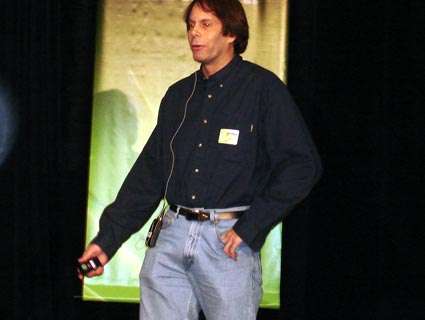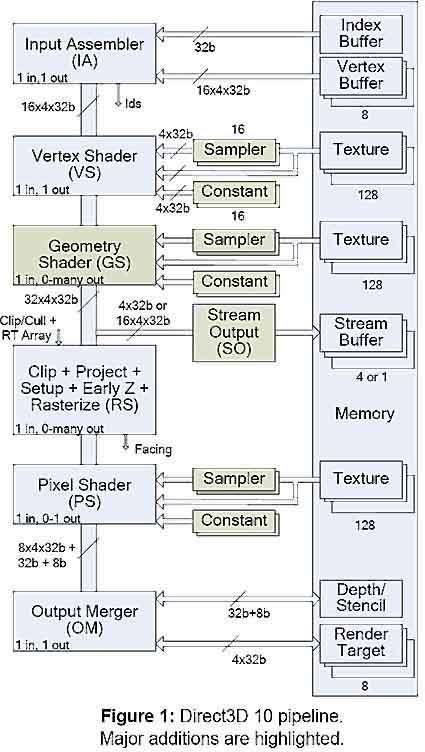What Direct3D 10 Is All About
What's Changed?
Last month, after a keynote session on DX10 during an Nvidia event, I was able to speak with David Blythe, Software Architect with Microsoft's Graphics Platform Unit on DirectX 10. The topic of his lecture was the vast improvements made to Direct3D 10. Software developers and hardware manufacturers wanted their largest problems addressed, and according to Blythe, Direct3D 10 solves their major complaints and concerns.
Direct3D 10 has five key changes:
- Improved programmer expressiveness (Shader Model 4.0 and Geometry Shaders)
- Tight hardware specifications
- Improved performance (lower command cycle counts per frame)
- Unified instruction sets (HLSL 10)
- Stream I/O (Geometry Shader can write to memory)
I will take a second to graphically show the Direct3D 10 pipeline of how images are rendered, which will help us see how the new changes come into play.
Taken from "The Direct3D 10 System" by David Blythe
The concept of a traditional pipeline was demolished with the advent of ATI's Radeon X1000 series cards and threaded processing. Therefore, saying a card has "N" pixel pipelines is a void concept; it is no longer relevant. Simply scrub it from your mind unless you are talking about older hardware.
Get Tom's Hardware's best news and in-depth reviews, straight to your inbox.
Current page: What's Changed?
Prev Page Digging Into DirectX 10 Next Page Improved Programmer Expressiveness
